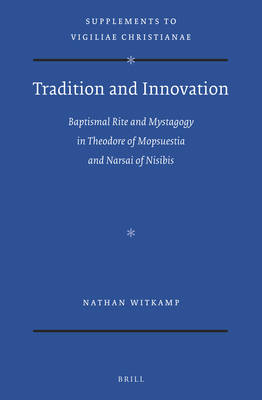
- Afhalen na 1 uur in een winkel met voorraad
- Gratis thuislevering in België vanaf € 30
- Ruim aanbod met 7 miljoen producten
- Afhalen na 1 uur in een winkel met voorraad
- Gratis thuislevering in België vanaf € 30
- Ruim aanbod met 7 miljoen producten
Zoeken
Tradition and Innovation: Baptismal Rite and Mystagogy in Theodore of Mopsuestia and Narsai of Nisibis
Nathan Witkamp
€ 253,45
+ 506 punten
Omschrijving
In Tradition and Innovation, Nathan Witkamp convincingly argues that Narsai of Nisibis' (d. ca. 503) baptismal rite and mystagogy, as portrayed in his Liturgical Homilies 21-22, are much less dependent on Theodore of Mopsuestia (ca. 350-ca. 428) than scholars have previously supposed. Narsai's baptismal rite turns out to represent a particular East Syrian liturgical tradition, independent of Theodore. In his mystagogy, Narsai uses Theodore's Baptismal Homilies 1-3 as just one source among others to create the artwork he desires. This detailed comparative study contributes to our understanding of rite and mystagogy in Theodore and Narsai within the broader early Syrian context, as well as to the reception of Theodore by Narsai and the East Syrian Church.
Specificaties
Betrokkenen
- Auteur(s):
- Uitgeverij:
Inhoud
- Aantal bladzijden:
- 434
- Taal:
- Engels
- Reeks:
- Reeksnummer:
- nr. 149
Eigenschappen
- Productcode (EAN):
- 9789004377851
- Verschijningsdatum:
- 6/09/2018
- Uitvoering:
- Hardcover
- Formaat:
- Genaaid
- Afmetingen:
- 160 mm x 239 mm
- Gewicht:
- 748 g

Alleen bij Standaard Boekhandel
+ 506 punten op je klantenkaart van Standaard Boekhandel
Beoordelingen
We publiceren alleen reviews die voldoen aan de voorwaarden voor reviews. Bekijk onze voorwaarden voor reviews.








